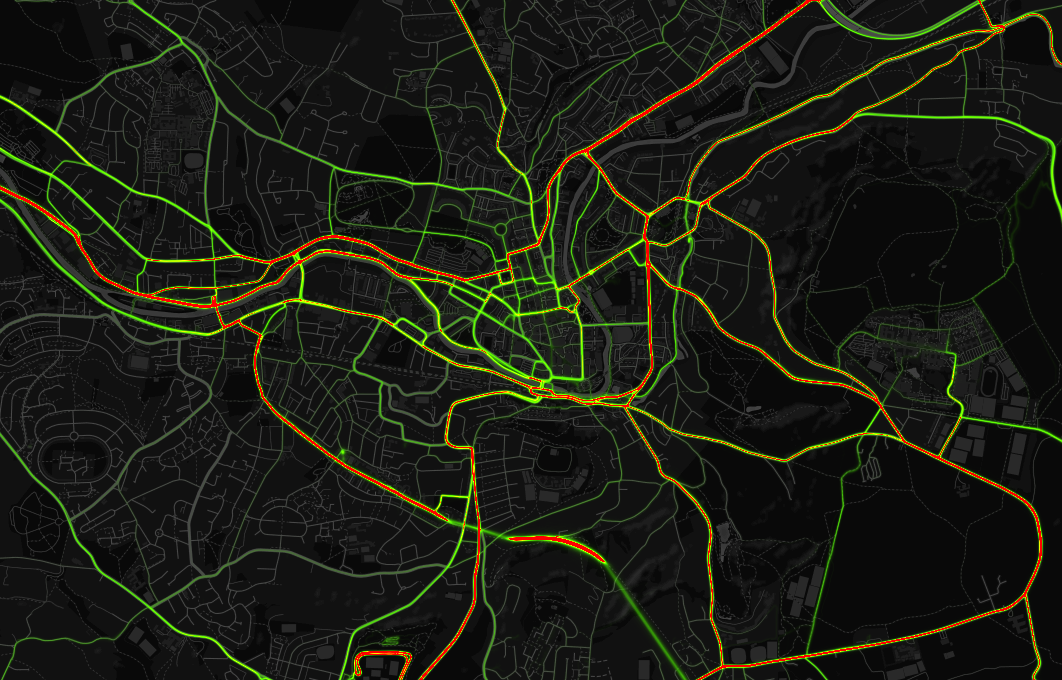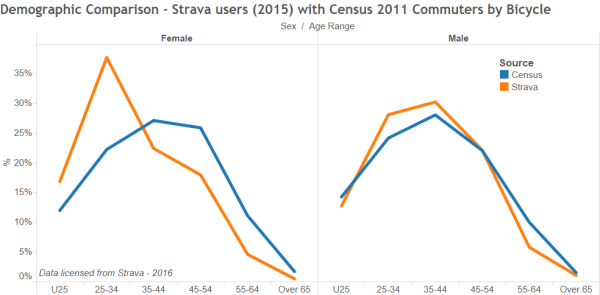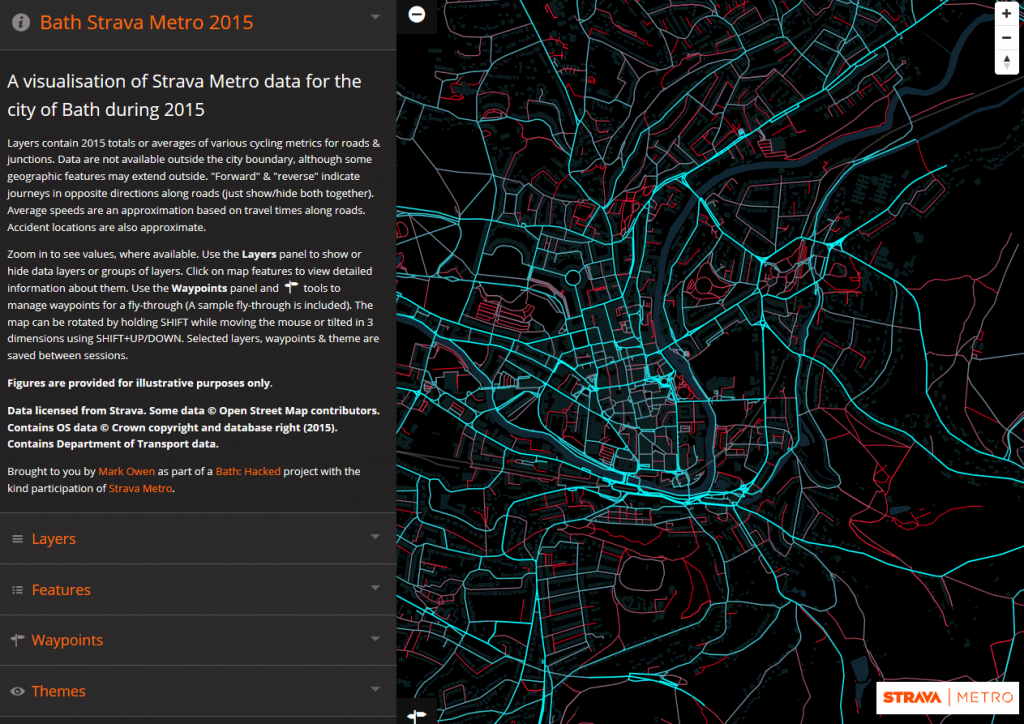
Bath: Hacked have been working for the last year, to use data from Strava a smart phone GPS tracking app to work out where people are cycling in Bath.
This data provides an insight into the cycle routes taken within Bath by Strava users which can’t be obtained in any other way, and has the potential to help plan future cycling routes.
Looking at the image above, the busiest routes appear to be:
- London Road to the east of Bath
- Upper Bristol Road
- 2 tunnels cycle-way
- Wells Road
- Bradford Road
- Bathwick Hill
The data does however need to be interpreted carefully, as it may not be truly representative of Bath cyclists; 80% of Strava users in Bath are male and 50% of the usage is for commutes. Bath: Hacked’s analysis comparing Strava users with a 2011 census suggests however that the data demographically may not be unrepresentative:

Their analysis suggests that there is 40% more cycling in the summer than in the winter, and higher weekday usage on Tuesdays and Wednesdays. Explanation from comments on Bath: Hacked’s website for the greater Tuesday and Wednesday use, suggests it might be a combination of cyclists not cycling on Mondays when they transport their clothes into work, and mid-week cycle-rides by Bath Cycling Club.
Bath: Hacked have also animated the data in a series of videos, showing usage by time of day, day of the week etc. An example of a time of day animation appears below:
They have now produced an interactive tool to help analyse this data for Bath with an explanation how to use it:

This type of data should help B&NES council better understand the needs of cyclists when planning support for cyclists in Bath.
Further information is available on the Bath: Hacked website.
Credit: to Strava for allowing Bath: Hacked access to the data.